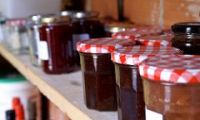A Beginner's Guide To Planning For The Hungry Gap in a Vegetable Garden
One of the wonderful things about growing your own food is learning how to eat seasonally. When you grow your own fruits and vegetables you can begin to develop a better understanding of the gardening year, and of what food is available during each season. If you plan well, and especially if you have an undercover growing area such as a polytunnel or greenhouse, you can grow and eat your own food all year round. Traditionally, the most difficult period for those aiming for self-sufficiency was in the spring – during a period known as the 'hungry gap'.
What is the Hungry Gap?
The hungry gap is the period when food stored over the winter has mostly run out or spoiled, yet the spring-sown crops are not yet ready to harvest. In the past, this was the leanest time of year for the kitchen gardener. However, with modern preservation and gardening techniques, some protection against winter weather, and successful planning, it is possible to still have plenty to harvest and eat during this time.
 Preserving For the Hungry Gap?
Preserving For the Hungry Gap?
We can take a leaf out of our ancestors' book by making sure that we make the most of summer bounty, and preserve the fruits and vegetables that we grow for later use. By learning how to make a range of preserves (as well as stocking our freezers and drying herbs and other things) we can make sure that we have enough food laid by to see us through the coldest months and the hungry gap beyond.
Jams, chutneys, pickles and piccalilli are all traditional ways of preserving home grown food. Learning a good range of such recipes can help us to continue to enjoy a varied and interesting diet throughout the winter and into the hungry gap.
Sowing in August for the Hungry Gap
 Those who are able to provide a little protection for crops over the winter months can also plan ahead for the hungry gap by sowing seeds in August. There are a range of vegetables that can be sown this month that will overwinter, and provide food during the hungry gap. These may include:
Those who are able to provide a little protection for crops over the winter months can also plan ahead for the hungry gap by sowing seeds in August. There are a range of vegetables that can be sown this month that will overwinter, and provide food during the hungry gap. These may include:
- Lettuces
- Spinach & Chard
- Rocket
- Corn Salad
 Pak Choi & other Asian Greens
Pak Choi & other Asian Greens- Spring Onions
- Kale
- Spring cabbages
- Turnips
Sowing these crops in August will give them some time to put on some growth and establish themselves before the cold weather sets in.
Thinking ahead, preserving and sowing will allow you to eat well all year – even during the so-called 'hungry gap'.